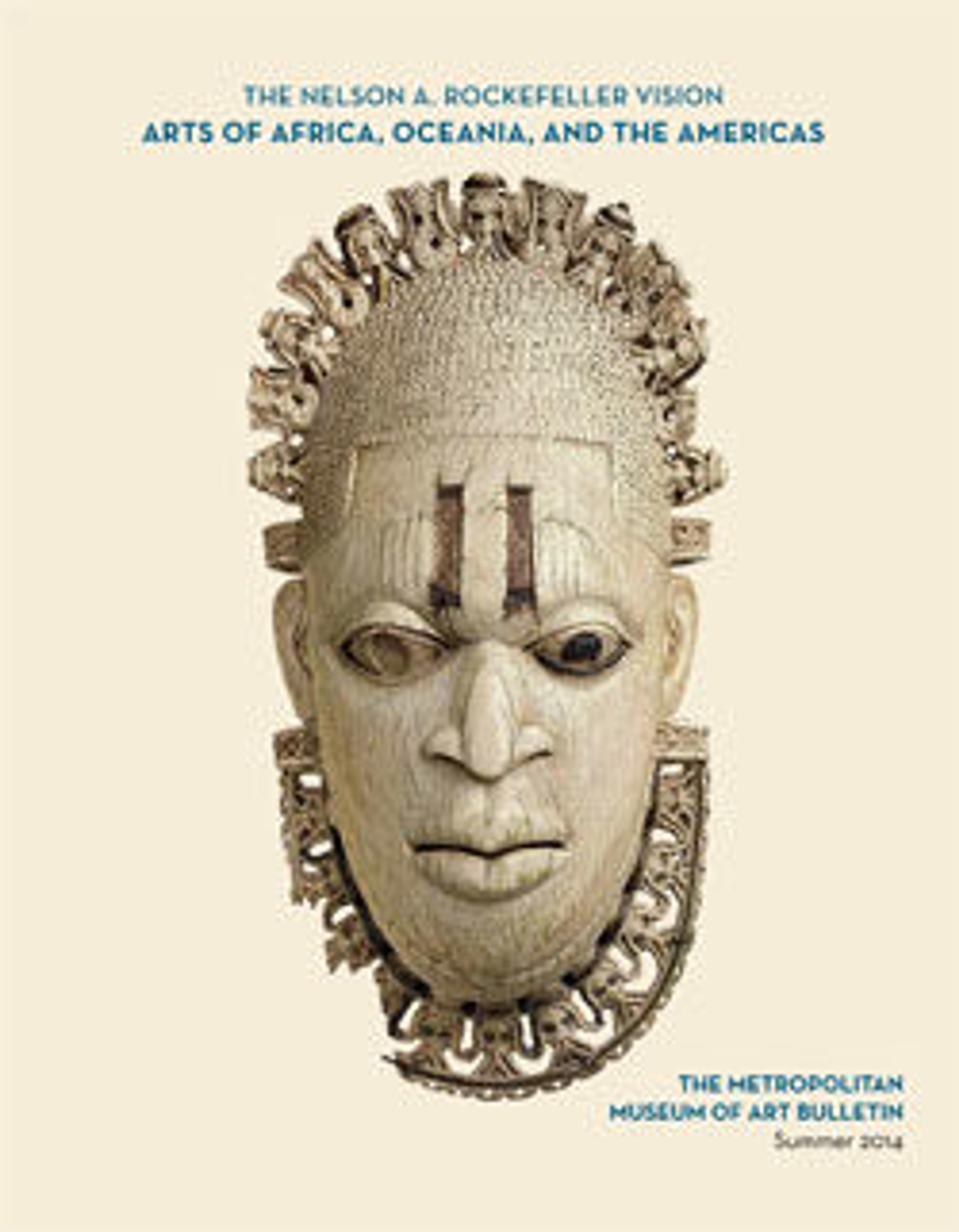Konomani (little pregnant one)
Initiation into the Jo society once marked the transition to adult life of young men and some women among the southern Bamana. Members of Jo oversaw an annual cycle of rituals. The most important of these, a rite devoted to fertility and social cohesiveness, took place during the rainy season. Among the collective responsibilities of Jo’s leadership was the commissioning and care of mafile fenw, or "things to look at" and contemplate. These refined sculptures were cared for through communal ceremonies during which they were carried in a dancing procession, purified, and decorated in preparation for public display. Over the course of the seven years of initiation, jocew (advanced members of the association) revealed and explained the esoteric significance of their potent creations to more recent initiates.
With her pregnant belly and full breasts, Konomani was one of an array of sculptures created to honor Gwandusu, the heroic mother. Arranged in a position of respect, Konomani was integrated into a jo ko don, an annual sculpture display that addressed concerns related to infertility and imparted shared social values. In Bamana thought, intercourse and childbirth are closely associated with sculptural production; the making of objects is analogous to the making of children. Jomogoniw (little sculptures of Jo) were cared for over many generations. Jo ko don displays thus honored creative production on multiple levels: through the central subject of the nurturing mother, the sponsorship of new sculptures, and the preservation of existing ones.
With her pregnant belly and full breasts, Konomani was one of an array of sculptures created to honor Gwandusu, the heroic mother. Arranged in a position of respect, Konomani was integrated into a jo ko don, an annual sculpture display that addressed concerns related to infertility and imparted shared social values. In Bamana thought, intercourse and childbirth are closely associated with sculptural production; the making of objects is analogous to the making of children. Jomogoniw (little sculptures of Jo) were cared for over many generations. Jo ko don displays thus honored creative production on multiple levels: through the central subject of the nurturing mother, the sponsorship of new sculptures, and the preservation of existing ones.
Artwork Details
- Title:Konomani (little pregnant one)
- Artist:Bamana numu (blacksmith)
- Date:17th–mid-20th century
- Geography:Mali, Bougouni region
- Culture:Bamana peoples
- Medium:Wood
- Dimensions:H. 40 1/2 × W. 8 3/4 × D. 10 3/4 in. (102.9 × 22.2 × 27.3 cm)
- Classification:Wood-Sculpture
- Credit Line:The Michael C. Rockefeller Memorial Collection, Gift of Nelson A. Rockefeller, 1965
- Object Number:1978.412.338
- Curatorial Department: The Michael C. Rockefeller Wing
More Artwork
Research Resources
The Met provides unparalleled resources for research and welcomes an international community of students and scholars. The Met's Open Access API is where creators and researchers can connect to the The Met collection. Open Access data and public domain images are available for unrestricted commercial and noncommercial use without permission or fee.
To request images under copyright and other restrictions, please use this Image Request form.
Feedback
We continue to research and examine historical and cultural context for objects in The Met collection. If you have comments or questions about this object record, please contact us using the form below. The Museum looks forward to receiving your comments.
